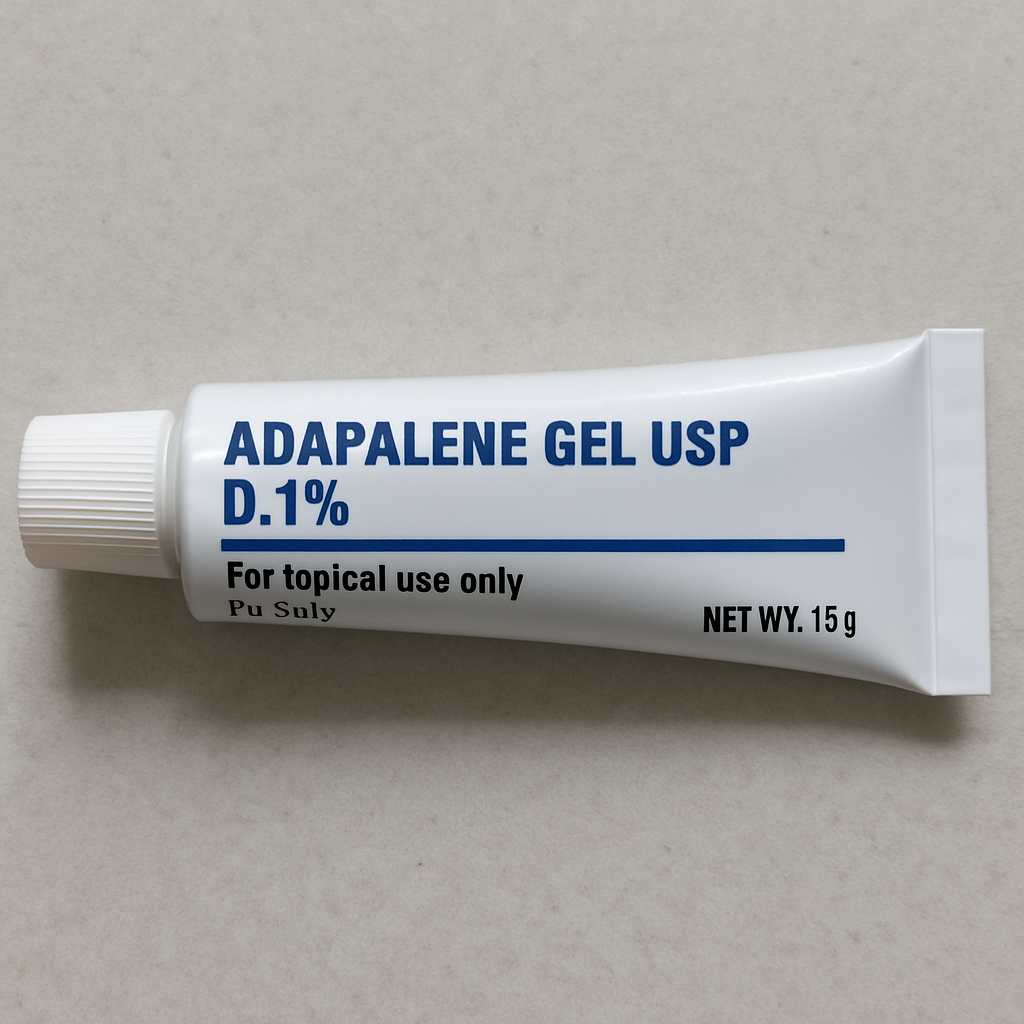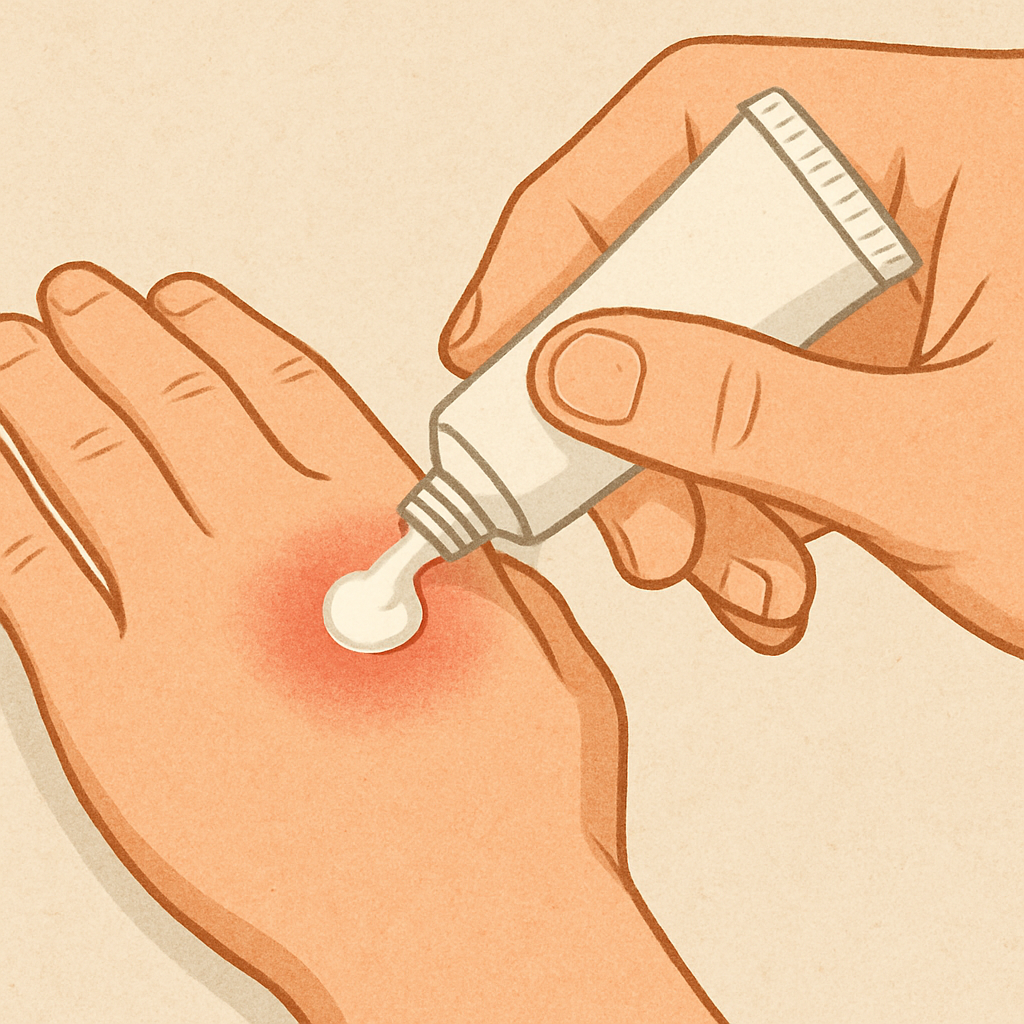Adapalene is a popular topical medication often used to treat acne. While it’s generally well-tolerated, it’s crucial to be aware of certain safety considerations and contraindications before using it. Understanding these can help ensure that you or your patients use adapalene safely and effectively.

Adapalene is a type of retinoid, a class of drugs derived from vitamin A. It works by affecting the growth of cells and decreasing inflammation, making it effective in treating acne. Adapalene is available in different formulations, such as gels, creams, and lotions, often found over-the-counter or as a prescription medication.
Mechanism of Action
Adapalene primarily works by normalizing the differentiation of follicular epithelial cells and promoting the turnover of skin cells. This reduces the formation of microcomedones, the initial stage of acne formation. Additionally, adapalene possesses anti-inflammatory properties, which help in reducing the redness and swelling associated with acne lesions. By targeting both the root cause and symptoms, adapalene is highly effective in managing acne.
Available Formulations
Adapalene comes in various formulations to suit different skin types and treatment needs. Gels tend to be more suitable for oily skin, as they are less greasy and absorb quickly. Creams are often recommended for those with sensitive or dry skin due to their moisturizing properties. Lotions provide a balance and can be ideal for normal skin types. Each formulation aims to deliver the active ingredient effectively while minimizing irritation.
Over-the-Counter vs. Prescription
Adapalene is unique because it is available both over-the-counter (OTC) and by prescription. The OTC versions are generally in lower concentrations, suitable for mild to moderate acne. Prescription versions may be in higher concentrations or combined with other active ingredients to tackle more severe cases. Consulting a healthcare provider can help determine the most appropriate formulation and concentration for individual needs.
Common Side Effects of Adapalene
While adapalene is beneficial in treating acne, like any medication, it can cause side effects. Some common side effects include:
- Redness and dryness of the skin
- Itching or burning sensation
- Peeling skin
- Sensitivity to sunlight
These side effects are usually mild and tend to decrease as your skin adjusts to the medication. However, if they persist or worsen, it’s essential to consult a healthcare professional.
Managing Initial Irritation
The initial irritation experienced when starting adapalene is common and often referred to as a “retinoid reaction.” This can include redness, dryness, and peeling. To manage these effects, it is advisable to use a gentle, hydrating cleanser and apply a moisturizer suitable for acne-prone skin. Over time, as the skin adjusts, these side effects typically diminish.
Understanding Skin Sensitivity
Adapalene can increase skin sensitivity, particularly to sunlight. Users should be vigilant about sun protection, including using a broad-spectrum sunscreen with at least SPF 30. Additionally, wearing protective clothing and seeking shade can help prevent sunburn and further irritation. It’s crucial to be consistent with sun protection to maintain skin health while using adapalene.
When to Seek Medical Advice
In some cases, side effects may persist or become severe. Signs such as excessive peeling, blistering, or severe burning sensations warrant medical attention. It’s important to consult a dermatologist if these occur, as they may recommend altering the treatment regimen or trying an alternative acne medication. Early intervention can prevent complications and ensure effective acne management.
Adapalene Safety: Key Considerations
Adapalene Contraindications
Before using adapalene, it’s important to know its contraindications. This will help prevent potential adverse effects and interactions.
- Allergic Reactions: If you have a history of hypersensitivity or allergic reactions to adapalene or any of its components, you should avoid using the medication. Allergic reactions can manifest as redness, itching, or swelling, and discontinuing use is crucial to prevent worsening symptoms.
- Pregnancy and Breastfeeding: Adapalene falls under the FDA’s Category C for pregnancy. This means that risk to the fetus cannot be ruled out. Therefore, it’s advised to use it during pregnancy only if the potential benefits justify the potential risks. If you are breastfeeding, consult a healthcare provider before using adapalene. It’s essential to weigh the risks and benefits carefully in these cases.
- Eczema: Individuals with eczema should avoid using adapalene, as it may exacerbate the condition and cause severe irritation. Eczema-prone skin is already sensitive, and retinoids can lead to increased inflammation and discomfort. Alternatives should be explored with a dermatologist for those managing both acne and eczema.
Adapalene Interactions

Certain interactions can affect how adapalene works or increase the risk of side effects. It’s important to be aware of these interactions:
- Other Topical Acne Treatments: Using adapalene with other topical acne treatments, especially those containing sulfur, resorcinol, or salicylic acid, can increase skin irritation. It’s advisable to introduce one treatment at a time and monitor skin response before combining products.
- Medicated or Abrasive Soaps: These can further irritate the skin when used alongside adapalene. Opt for gentle cleansers instead. Harsh soaps can strip the skin of its natural oils, exacerbating dryness and irritation commonly associated with adapalene use.
- Skin Products with Alcohol: Avoid using skin products that contain alcohol, astringents, or lime as they can lead to excessive dryness and irritation when combined with adapalene. Alcohol-based products can disrupt the skin barrier, making it more susceptible to irritation from adapalene.
Adapalene Warnings
Adapalene comes with specific warnings to ensure its safe use:
- Sun Exposure: Adapalene can increase your skin’s sensitivity to the sun, leading to sunburn. It’s advisable to use sunscreen daily and wear protective clothing when outdoors. Consistent sun protection is key to preventing photodamage while undergoing adapalene treatment.
- Avoid Harsh Weather Conditions: Extreme cold or wind can irritate the skin further when using adapalene. Protective measures should be taken to shield the skin in such conditions. Moisturizers can provide an additional barrier to protect against environmental stressors.
- Do Not Apply to Damaged Skin: Avoid using adapalene on cuts, scrapes, sunburned, or eczema-affected skin, as this can cause severe irritation. Applying to compromised skin can lead to increased absorption and irritation, complicating the healing process.
How to Use Adapalene Safely
To maximize the benefits of adapalene while minimizing potential risks, follow these guidelines:
Proper Application
- Cleanse Gently: Wash your face with a mild, non-medicated soap and pat dry before applying adapalene. Avoid harsh scrubbing, which can irritate the skin and exacerbate the drying effects of adapalene.
- Apply Sparingly: Use a pea-sized amount of adapalene and apply a thin layer to the affected area once daily, preferably at bedtime. Over-application can lead to increased irritation without enhancing efficacy.
- Avoid Sensitive Areas: Do not apply adapalene near the eyes, lips, or inside the nose to prevent irritation. These areas are particularly sensitive and prone to adverse reactions.
Gradual Introduction
If you’re new to using adapalene, consider introducing it gradually to allow your skin to adapt:
- Start Slowly: Use adapalene every other day or a few times a week initially, then gradually increase to daily use as your skin becomes accustomed. This approach helps minimize initial irritation and allows for better tolerance.
- Moisturize: Use a non-comedogenic moisturizer to combat dryness and maintain skin hydration. Moisturizing helps restore the skin barrier, reducing irritation and enhancing overall comfort during treatment.
Monitoring and Adjustment

by Elen Sher (https://unsplash.com/@lenochka210292)
Regularly monitor your skin’s reaction to adapalene and adjust usage as needed:
- Watch for Adverse Reactions: If you experience severe irritation, redness, or peeling, reduce the frequency of application or discontinue use temporarily. Adjustments can help find a balance between efficacy and tolerability.
- Consult a Dermatologist: If you’re unsure about using adapalene or if side effects persist, seek advice from a dermatologist for personalized guidance. Professional input can provide tailored recommendations and alternative options if needed.
Conclusion
Adapalene is an effective treatment for acne, but it’s important to be aware of its contraindications and potential interactions to ensure safe use. By understanding how to use adapalene properly and being mindful of any adverse reactions, you can harness its benefits while minimizing risks. Always consult with a healthcare professional if you have concerns or questions about using adapalene as part of your skincare routine. With careful management and attention to detail, adapalene can be a valuable component in achieving clearer skin.

